Tucked up over the city of Wellington is Zealandia, an ecosanctuary reminiscent of the days before humans arrived in New Zealand. A predator-proof fence surrounds the Zealandia sanctuary, creating an “island” within New Zealand’s capital city and allowing birds and other native creatures to live wild as nature intended.
Whether you are a nature or history lover, bird watcher, or just a visitor, Zealandia Wellington is a must-see. It is much more than a bird sanctuary, filled with New Zealand flora and fauna (birds, reptiles and insects); it is a paradise a world apart from the city below.
Visitors choose between day and night entry. Each is a unique experience with its own advantages. We have done both and share our thoughts below.
However, you can reserve your ticket now if you already know your choice.
Zealandia day vs night highlights
Before I go into our experiences on each, I thought I would share our summary. First is the bottom line. We loved both options. Zealandia is magical no matter when you visit.
However, if I had to choose only one, I would recommend the night tour for most visitors, as it is one of the most unique things we have ever done.
Zealandia daytime visit
Advantages of a daytime visit
- Option for a 2-hour guided tour or general admission pass allowing self-guided walks through the grounds.
- Birds you might see during the day: Takahē, tui, Kākā, Kākāriki, Saddleback, Whitehead, Kererū, Hihi, Bellbird
- Also, you might see tuatara and wētā
- Small groups with a maximum of 12 people per tour.
- No minimum age.
- There is a free shuttle to Zealandia during the day.
Disadvantages of a daytime visit
- You miss the opportunity to see and hear the nocturnal animals
- You must leave the park by 5pm in the summer, 4.30 after May 1.
Zealandia night visit
Advantages of a night visit
- Guided 2.5-hour tour.
- About 80% of night tours see at least one of Zealandia’s 150 little spotted kiwi birds.
- Other birds you might see include: morepork, Pāteke, Takahē and Kākā
- Other night creatures, you might see include: wētā, glow worms, Maud Island Frog, and tuatara
- Special lights are provided to each participant.
- End the tour with a cup of hot kawakawa (bushman’s tea)
- Small groups with a maximum of 12 people per tour.
Disadvantages of a night visit
- No option for self-guided entry
- For families, the minimum age is 12.
- No shuttle option at night.
- More expensive
- Requires more planning and pre-booking as it frequently sells out.
- The Zealandia Cafe (Rātā Cafe) is closed at night. However, the gift shop remains open.
Zealandia night tour – our experience
Setting out at dusk, we got to watch the forest transition to nighttime.
As the nocturnal creatures awaken, Zealandia by night becomes a different place. Like walking through an enchanted forest, the sights and sounds of the park at night were intriguing.
Every night is different. Our extremely knowledgeable guide had a keen eye for spotting wildlife, and she could identify bird calls for us, a skill I simply don’t possess on my own.
But more important to our wonderful evening was her passion for wildlife, conservation, and the entire ecosystem that surrounded us.
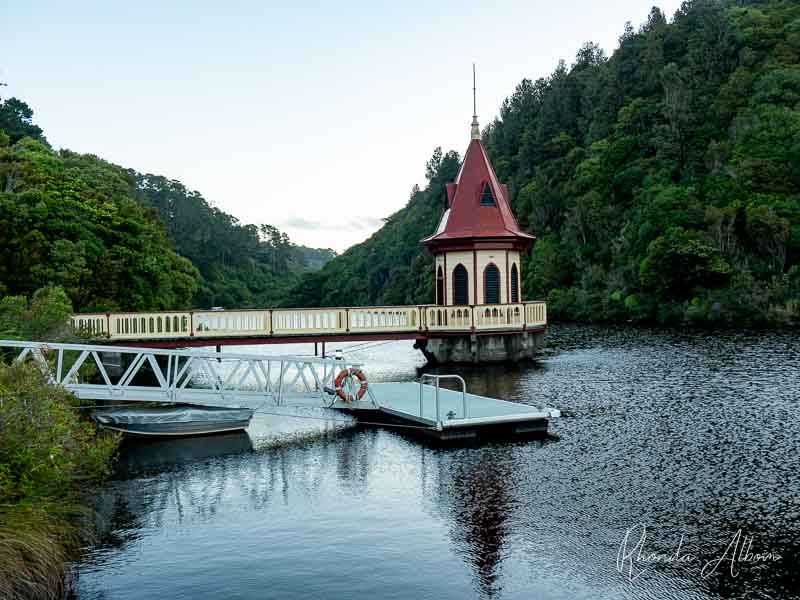
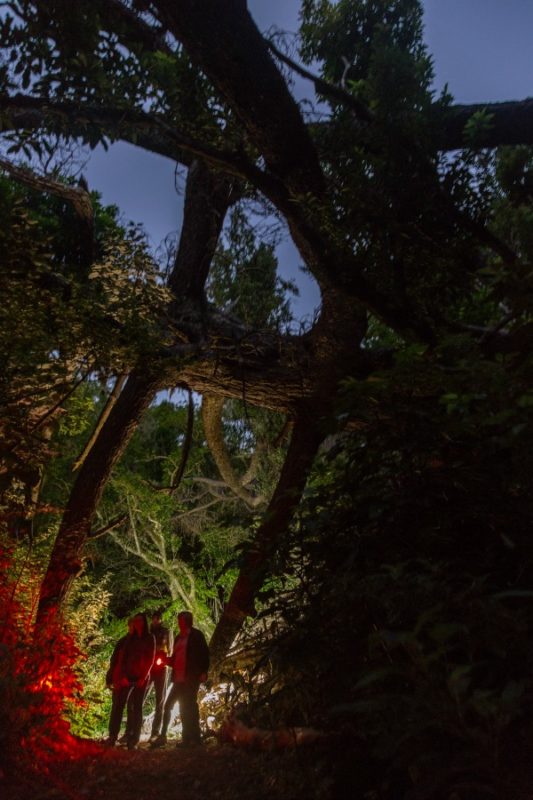
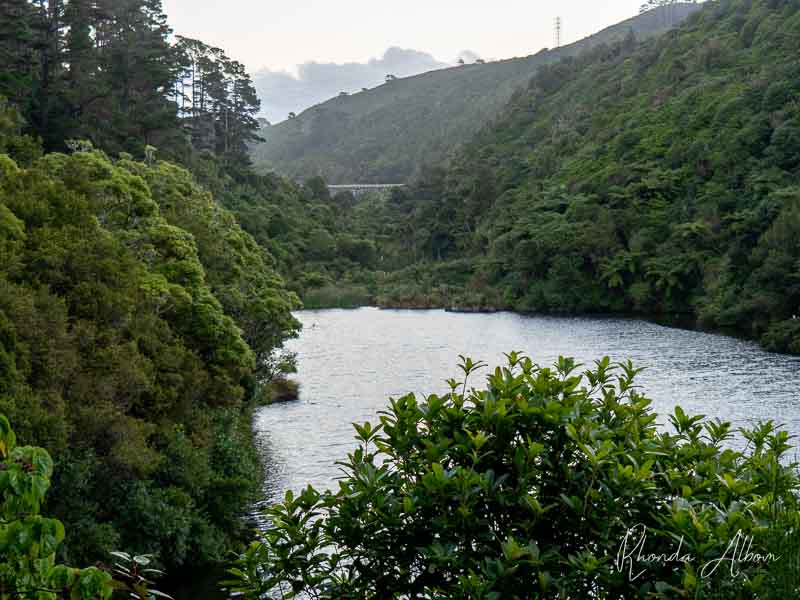
Highlights of our Zealandia night tour
Red light torches are provided to all tour participants. The red light allows us to see without affecting our night vision and does not disturb the animals.
After watching a short film, we headed into the sanctuary with torches (flashlights). Our Zealandia night tour’s first stop was a beautiful vantage point looking out over much of the ecosanctuary.
Then we continued our amazing walk. Some of the highlights included spotting Tui, kaka, pied shags, North Island robins, kereru (wood pigeon), and Takahe. We also heard the morepork owl’s call and six kiwi birds’ calls, although we didn’t see any that night. (If you have the same luck, here are more places to see kiwi)
Our guide also pointed out eels, reptiles, insects like the tree weta, stick insects, several species of spiders, and various native plants.
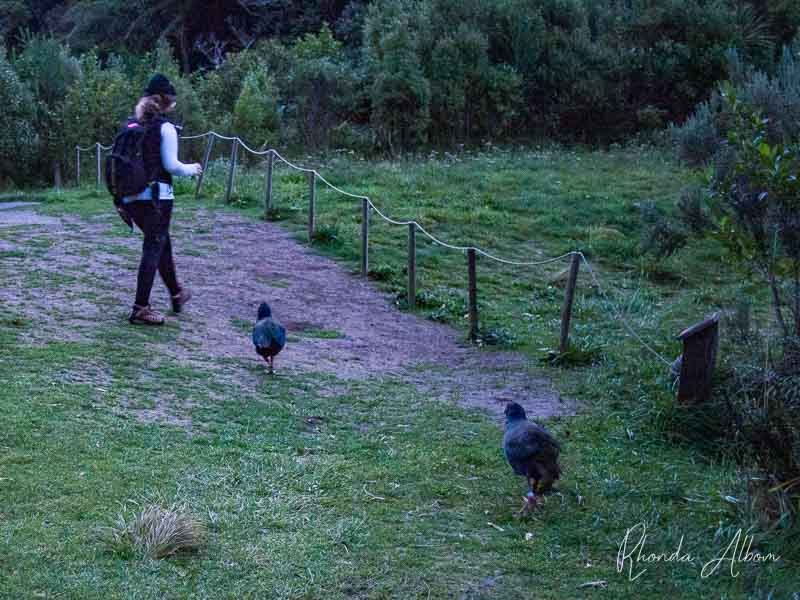
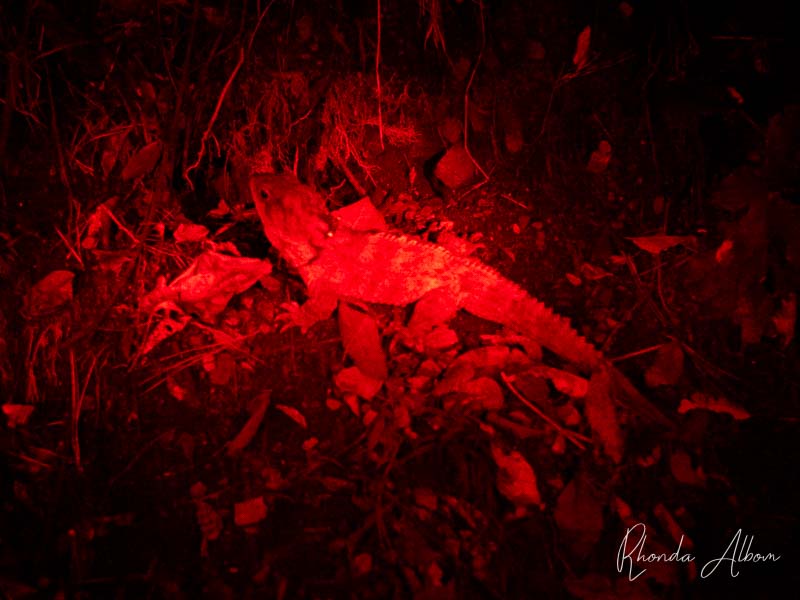
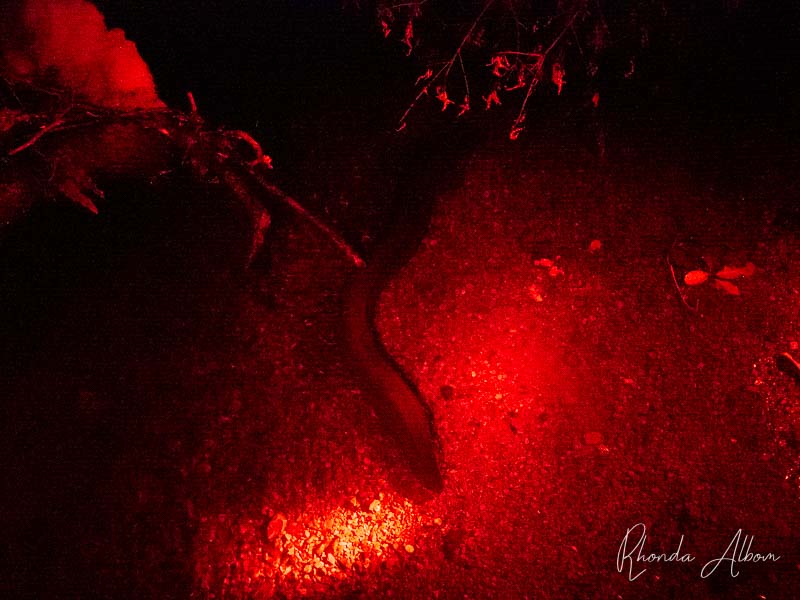
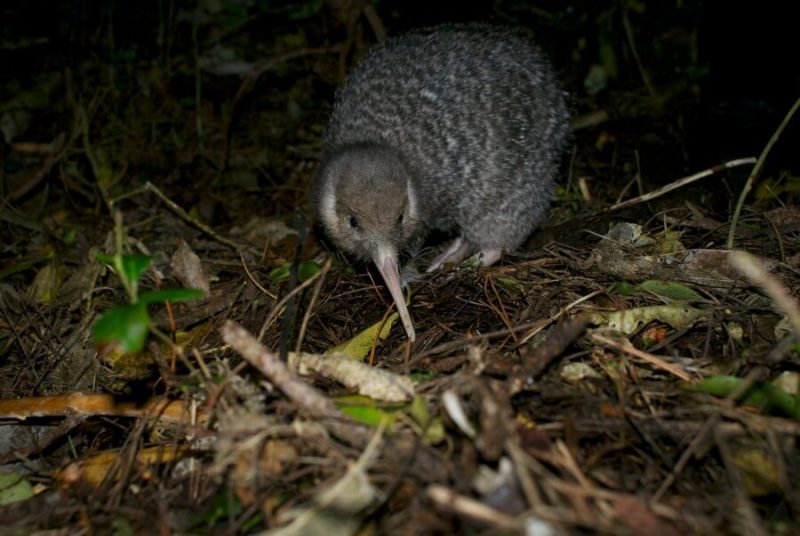
Zealandia eco-sanctuary by day
Our daytime visit was a few years ago, but little has changed since then as Zealandia’s conservation project is a 500-year vision for full regrowth to a self-sustaining ecosystem as it was before human inhabitants.
Zealandia is still one of my favourite places to visit in Wellington.
In addition to the eco-sanctuary, access to the educational exhibition hall (created by the designers of the LOTR Exhibition) is included in your entrance fee.
For me, the guided tour really brought the park to life. Just like at night, without the passionate guide, I wouldn’t have seen nearly as much as I did.
Our guide identified both plant and animal life.
She pointed out rare and endangered species as well as more common ones like the Silver Fern, a national symbol of New Zealand that is identified by the green upper and silver underside leaves.
We walked along the gentle sloping tracks. Sometimes she spoke, other times in silence that was frequently interrupted by songbirds.
The crisp, fresh air makes it difficult to remember that this Wellington sanctuary is only 10 minutes from the city centre.
Before we left, she even showed us an entrance into the abandoned mine which is now home to the cave wētā., but I am not sure this is currently included in daytime tours.
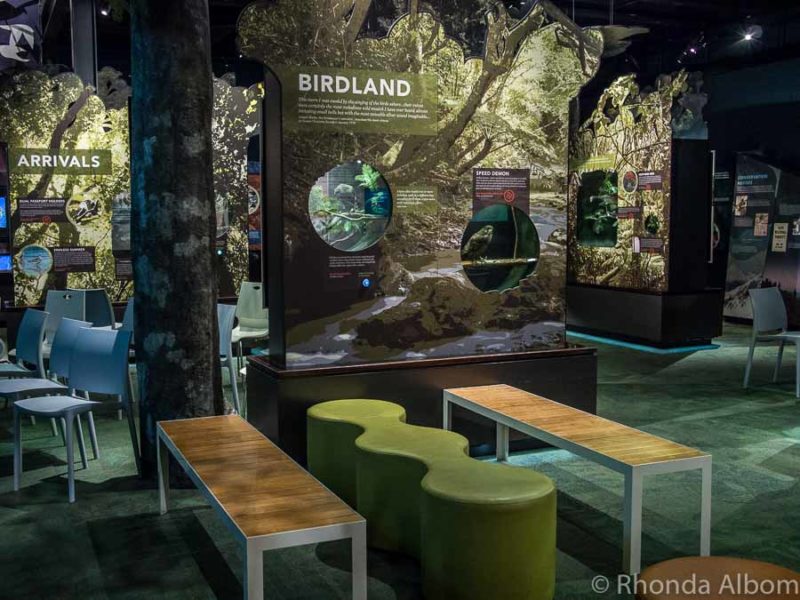
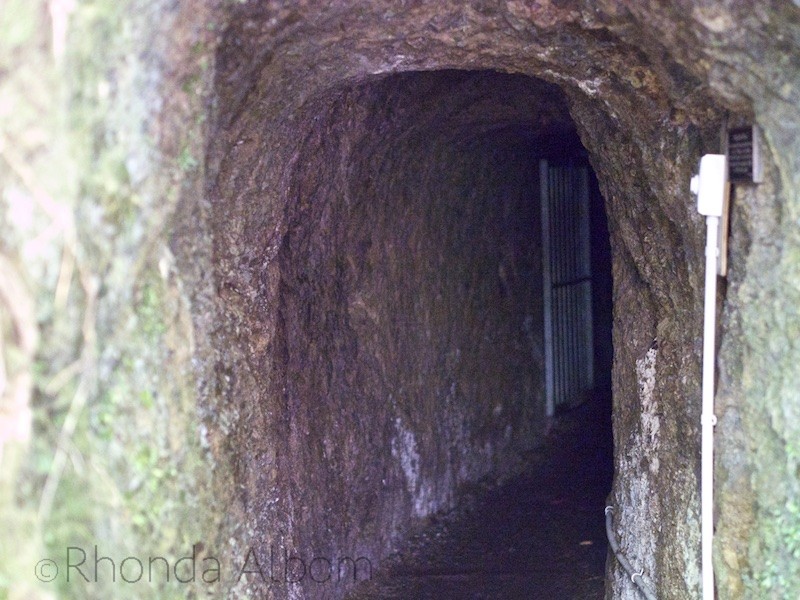
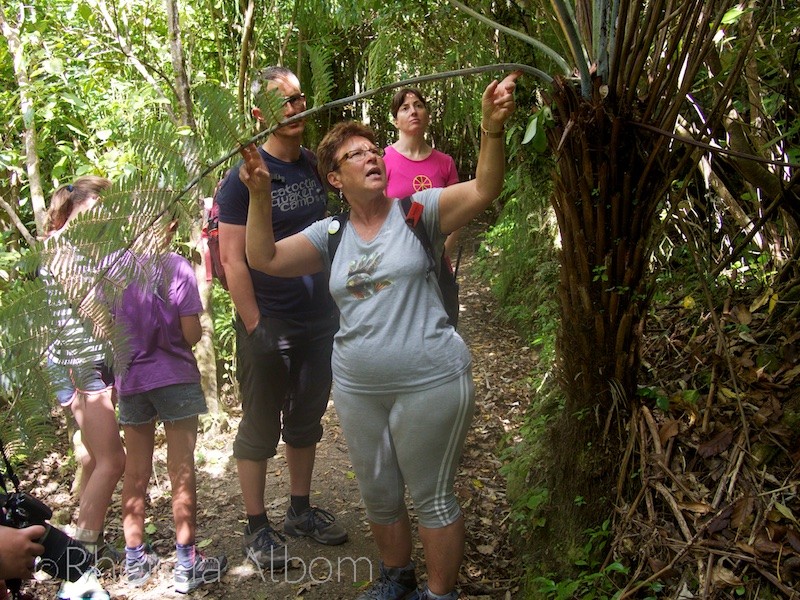
A few of the inhabitants of Zealandia Wildlife Sanctuary
Some of the animals we saw that are photoed below include:
- This shag and baby in a nest are some of the many NZ native birds found here.
- Reintroduced to Zealandia in 2002, the kākā had effectively been extinct in Wellington since the early 20th century. It is a North Island bird and is related to the alpine parrot, kea. Often heard before seen, kākā makes a somewhat screechy sound which you can hear here.
- The critically endangered takahe.
- I saw a saddleback at Zealandia, up in the trees. I could see either head or body, but never both, so this photo is from the Zealandia media pack.
- This is the first tuatara I have seen outside of an enclosure. I could clearly see the spines on his back without the glass that usually separates us at other locations.
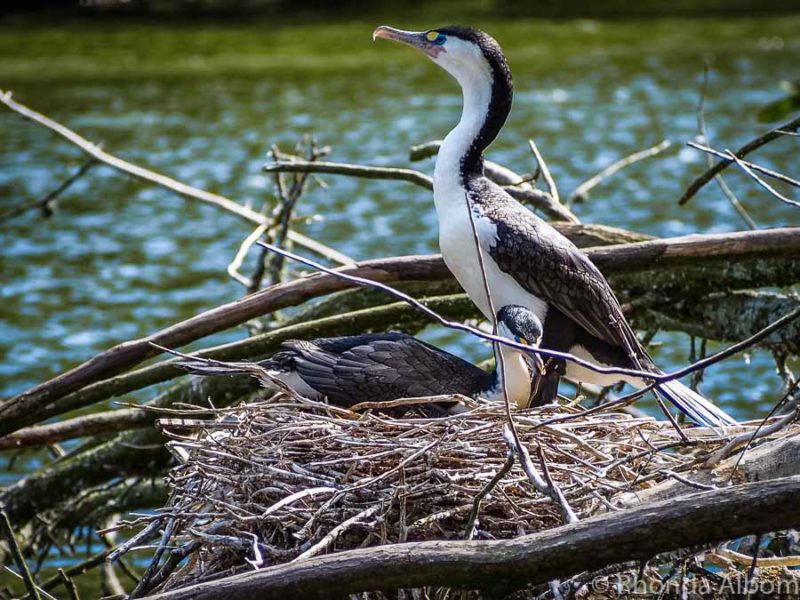
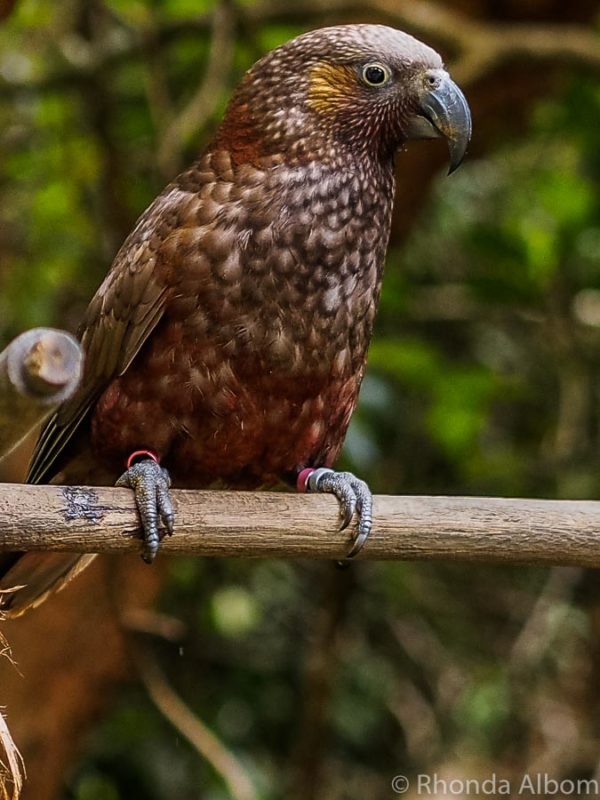
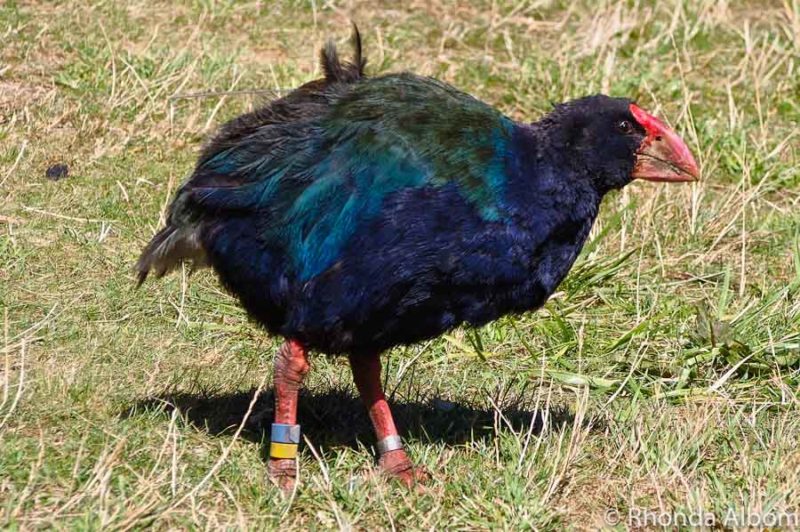
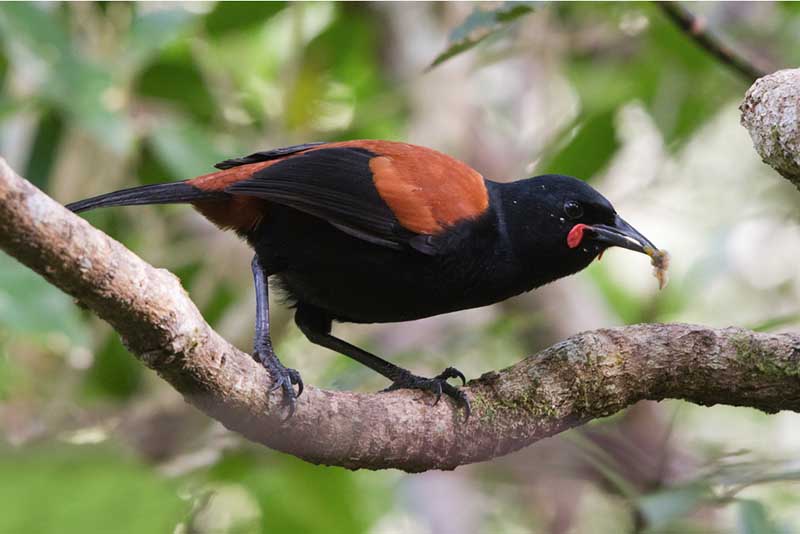
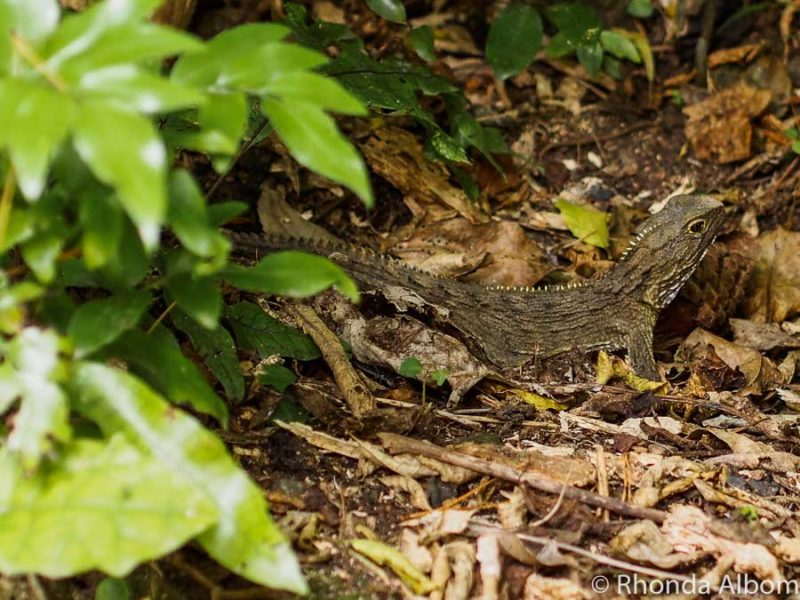
Getting to Zealandia in Wellington
- The Zealandia entrance is at 53 Waiapu Road.
- There is a small parking lot on site. We found the Zealandia free shuttle very easy to use for our daytime visit. Plus, the cable car stops nearby.
- About 500 active volunteers and 50 staff members support this wildlife sanctuary.
- Zealandia is formerly known as the Karori Wildlife Sanctuary.
General tips for visiting the ecosanctuary
- Allocate a minimum of two hours for your visit. Nature lovers could easily spend the entire day.
- Regardless of when you visit, wear comfortable walking shoes. The main trail is a gentle grade and very easy to navigate. However, it is unpaved, so the ground can be uneven. If you are into tramping, there are more difficult trails that recommend walking boots. They also have a wheelchair-accessible path.
- Bring a drink bottle and a jumper (jacket) as the Wellington weather is unpredictable. Note that the tours run in all weather
- Twilight tours and Kids’ night walks (school holidays) are for children as young as 5 years old.
Can’t get to Wellington – Check out these options
While Zealandia is truly special, it’s not the only fabulous eco-sanctuary in New Zealand. In fact, we have been to two others that remind us of Zealandia while we were there.
Just outside of Dunedin is Orokonui Ecosanctuary a self-sustaining ecosystem supporting many rare and endangered native plants and animals, particularly many of the South Island native species.
In the Auckland region, there is the island of Tiritiri Matangi. Now an open bird sanctuary island, it is home to many of the same native species.
Similarly, two of the Auckland regional parks now have predator-proof fences, thus creating open bird sanctuaries. These are Shakespear Park at the end of Whangaparaoa Peninsula and Tāwharanui Regional Park a bit farther north and east of Warkworth.
Will you take the Zealandia day or night tour?
Disclaimer: I was a guest of Zealandia for the purposes of writing this article. The opinions expressed here are strictly my own.

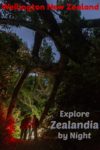
Mary {The World Is A Book}
This looks like such a great place to visit during both day and night. I like that the animals are roaming freely. It’s a great way to see some of the local animals and some I’ve never heard before. We always enjoy night tours with animals so if given the choice, I would definitely do this.
Wayne Olson
Wow! This would be an interesting adventure to learn more about the animals (I would love to see a Kiwi!) 🙂
Best wishes,
Wayne!
Comedy Plus
I want to go during the day and then at night. I would love this place.
Have a fabulous day. 😎
Anda
I like to idea of a night tour in a place like Zealandia Ecosanctuary. I’m sure you get to see way more animals than you would during the day. Isn’t it a little scary though? How about if you step on a snake? Brrrr! My husband always keeps pushing me to go and explore some wild areas by night with him, when we travel. But I always refuse. Just the two of us in the wilderness at night seems scary, but in a guided tour it’s different.
Rhonda Albom
New Zealand is one of only three countries in the world that has no snakes, so no worries there.
California Globetrotter
How awesome is this animal sanctuary!? I love that its a protected area where so many different types of species have a place they can call home!
Amy
Wasn’t that the bridge that Dean Waratini stood on for one of his songs in the 1970s? It looks familiar…
Rhonda Albom
I am so impressed that you remember that moment and song. I had to look it up, and I think you are correct. Hre is the Bridge: https://youtu.be/U2VKY1iCUG4
Jill
I would be all about visiting Zealandia if I were to make my way to New Zealand. And I know my husband would put this high on his list also. Looks like a very interesting, and cool, place to visit.
Rhonda Albom
Jill, perhaps it’s time for a trip to New Zealand?
Paul Pietrangelo
So many interesting things to show and explain to. To take photos at night are amazing Rhonda. Thank you for doing and showing us this amazing things because I doubt that I’ll ever be there to see them myself. See ya.
Cruisin Paul
Rhonda Albom
The night photos were a bit difficult to take, so I was glad they offered me access to a few media shots. And, you never know. You and Mary love to cruise, perhaps a long cruise to New Zealand someday? Wellington is usually a stop on the itinerary.
Paul Pietrangelo
You know Rhonda, I’ll just sit down and think about that. Maybe someday we’ll even get a chance to meet you and we could sit down to lunch. See ya.
Cruisin Paul
Wednesday Elf
Rhonda, thanks for introducing me to Zealandia. How wonderful that a place has been created and set aside to save and preserve the natural flora, fauna and wildlife of the area. Beautiful photos as always and delightful narration of what you saw and what a visitor can expect to experience.
Rhonda Albom
It is such a fascinating place to visit and see nature the way it was intended.
Ryan Biddulph
We saw so many shags yesterday down at, of course, Shag Point 😉 Of course we saw the Moeraki Boulders too. Impressive as can be. The boulders, those shags and the many fur seals laying out and resting. Zealandia is noted for our house sit at Paekakariki in about 2 weeks. Looks like a winner! Thanks for sharing.
Ryan
Rhonda Albom
Day or night, you will love Zealandia. If you go in the day, be sure to take one of the tours (they are included in the entrance fee). As for the Moeraki Boulders – I love them. It is one of my favourite spots in New Zealand.
Sanjana @ Green Global Travel
Great post and lovely pictures! Sounds like it was a fun visit!
Linja
What a neat place! Love those birds!
Rhonda Albom
There were so many more interesting birds that we saw, hiding in the trees, making it super difficult to get great photos.
Louise
I spent 10 days in Wellington a few years ago. I really wanted to get to Zealandia but my schedule didn’t allow it. I missed out. I’ll have to get back there one day and make time to visit. How lovely to see those “sanctuary birds” how sad that they need to be “sanctuary birds”.
Rhonda Albom
Too bad, it is really a neat place. It’s like traveling really far away, yet only going a few minutes outside of the city.
Julie K Pick
Lots of unusual birds and creatures! My favorite is the Kaka.
KVVS MURTHY
Very beautiful pictures..and with your account of details about the place..!
Nancy
Such wonderfully exotic photos! Thanks for posting them.
Rhonda Albom
Living here in New Zealand, they don’t feel that exotic to me, but they are special as so many are endangered.
Claire
You got some beautiful pictures here 🙂 love the bird close up’s…
Lux Ganzon
Wow, what an adventure. I like to see wild, rare animals too, but I must admit I’m more comfortable when they’re inside a cage or behind the bar. Not that I support animal caging but I’m just a scaredy cat when it comes to unfamiliar animals.
Anyway, good for you to have enjoyed this kind of activity outdoor.
Rhonda Albom
Remember there are no large indigenous mammals in New Zealand, so not much here that can do more damage than a peck, and few of the birds or critters would ever both people.
Wendy R
Would love to visit New Zealand some day.
Rhonda Albom
I hope you get here, there are so many amazing things to see and do in New Zealand. Zealandia is just on of the highlights.
Lisa Howard
I love the shot of the Kākā. That’s a cool looking bird!
Rhonda Albom
I agree, he is a cool looking bird, although he looks quite a bit like his cousin the Kea. On the South Island they are known for picking at the rubber which holds the windscreen (front window) onto the car.
Leovi
Wonderful capture the natural, beautiful pictures and great tour!
travelFREAK
Fantastic post, Rhonda! Extremely useful for people looking for adventure!
Paul Sachs
nice place!
PAUL SACHS
Joyce
Very cool photos.
Jill
Oh yes, I would visit here if I could. I’d spend more than a couple of hours too. What great shots.
Sarah E. Albom
Cool photos 🙂 I love that picture of the Kākā especially; it’s definitely my favourite. And good tips. Zealandia was an awesome reserve!
Stefanie
Love the photos of the birds and the little dinosaur – somehow this reminds me of the movie Jurassic Park. Your tips for visiting are great!
Alex J. Cavanaugh
You have so many animals not found anywhere else in the world. Impressive for a couple of large islands.
Glad the Shags weren’t shagging at the time…